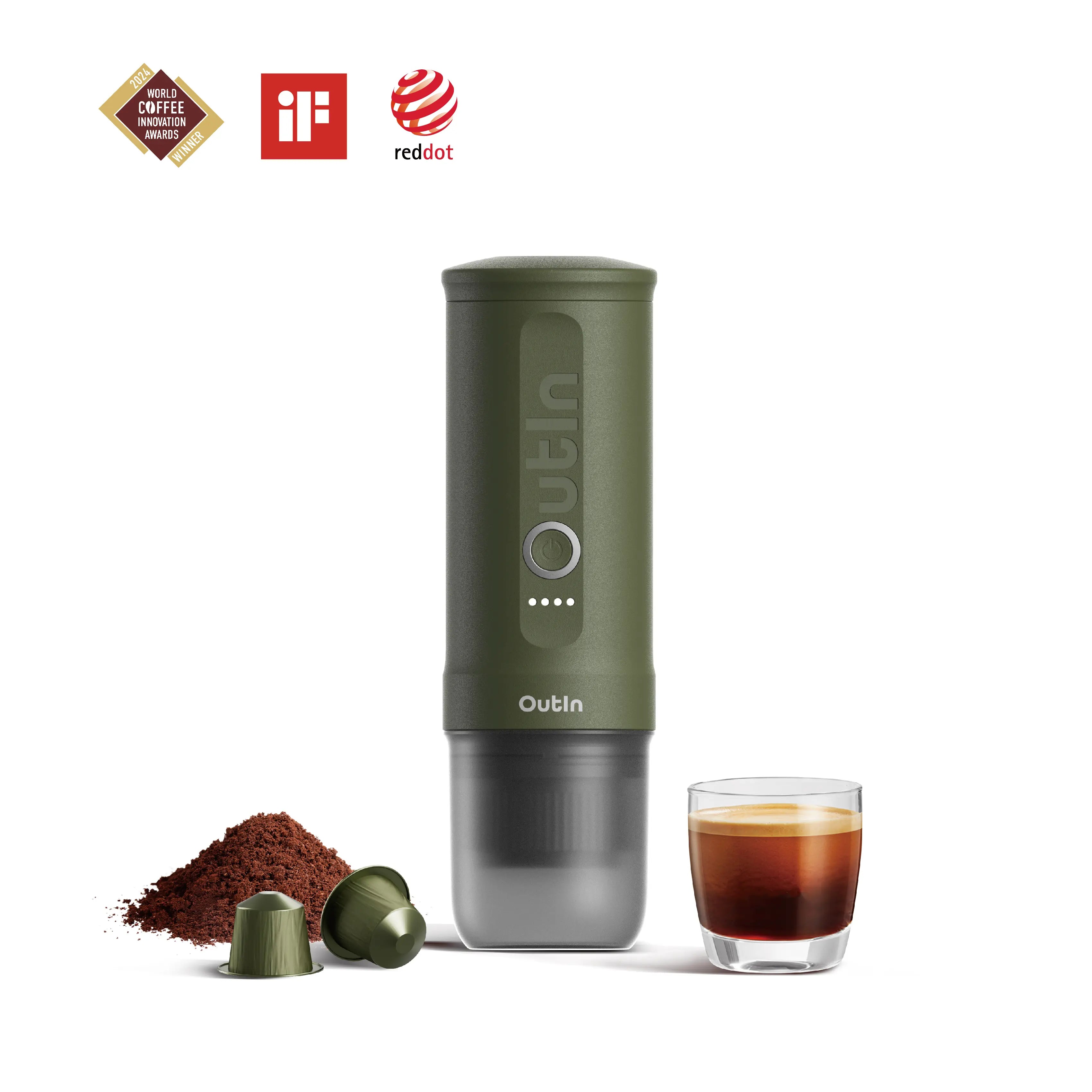A single origin espresso comes from coffee beans grown in one specific location, rather than being a blend of beans from different places. Traditional espresso blends mix beans from multiple sources to maintain a consistent flavor, but single origin espresso shows off the natural taste of beans from just one area. The flavors vary based on where the beans grow - Ethiopian beans often taste bright and fruity, Colombian beans have chocolate-like notes, and Indonesian beans carry hints of spice. More people are choosing single origin espresso made with espresso machines to experience these different regional tastes.

How Geography and Environment Shape Coffee Flavors
What Makes Coffee Terroir?
Terroir combines all the natural elements that affect how coffee tastes. Coffee plants respond strongly to their environment, similar to wine grapes. At higher altitudes, coffee beans grow more slowly and develop richer flavors. Different soil types supply various minerals that change the taste. Local weather, including rain patterns and temperature changes, shapes how the coffee cherries grow and mature.
Regional Flavor Differences
African Origins: Bright and Floral
Coffee from Ethiopia and Kenya stands out for its bright, lively taste. Ethiopian beans often have berry-like sweetness and floral notes, while Kenyan coffees are known for their wine-like acidity and citrus flavors. The volcanic soils and high altitudes of East Africa create these vibrant taste profiles.
South America: Rich and Balanced
Brazilian and Colombian coffees offer smooth, balanced flavors. Brazilian beans grown at moderate altitudes produce coffee with mild nutty tastes and subtle caramel sweetness. Colombian coffee beans, cultivated in mineral-rich volcanic soil at high elevations, develop deep chocolate notes and a gentle citrus brightness.
Asian Origins: Bold and Earthy
Indonesian coffees, particularly from Sumatra and Java, have bold, full-bodied flavors. The humid climate and volcanic soil create beans with earthy, woody notes and hints of warming spices. Some Indonesian coffees also carry a subtle herbal quality that sets them apart from other regions.

From Farm to Cup: How Coffee Reaches You
Tracking Coffee's Source
Single origin coffee creates a clear path from specific farms to your cup. This transparency helps farmers receive fair prices based on their coffee's quality and unique characteristics. When buyers know exactly where their beans come from, they can form direct relationships with farmers and support sustainable growing practices. Consumers can learn the story behind their coffee - who grew it, when it was harvested, and how it was handled at each step.
Processing Choices and Methods
Washed Method: Precision Control
After picking, farmers quickly remove all the cherry fruit in water-filled channels. They sort beans by density and ferment them in tanks before drying. This method requires more water and equipment but gives farmers precise control over the process. It's especially common in regions with advanced processing facilities.
Natural Method: Traditional Approach
Farmers spread whole coffee cherries on raised drying beds or patios. This simple method needs less water and equipment but demands careful attention to drying time and rotation of cherries. Weather conditions greatly affect the success of natural processing.
Honey Method: Controlled Fermentation
Workers remove varying amounts of the cherry fruit, leaving some on the bean during drying. The sticky remaining layer (like honey) requires careful monitoring to prevent mold. This method balances resource use with processing control.
Nano Portable Espresso Machine (Forest Green)
How to Control Quality for Single Origin Espresso
Special Standards for Single Origin Beans
Unlike blended espresso beans, single origin coffee must meet stricter quality standards because:
- Each bean's qualities are clearly noticeable in the cup
- There's no way to mask defects by blending
- Consistency relies on careful sorting from one source
Quality checks for single origin beans include:
- Bean uniformity from the same lot
- Defect sorting with extra care
- Strict moisture level control
- Clear documentation of harvest date and lot number
How to Roast Single Origin Espresso Beans
Step-by-Step Roasting Guide
- Start with a lower charge temperature (350-375°F) than for blends
- Extend the drying phase (2-3 minutes longer) to develop flavors
-
Control the first crack temperature carefully:
- African beans: 385-395°F
- South American beans: 390-400°F
- Asian beans: 395-405°F
- Keep development time between first crack and finish shorter (1-1.5 minutes)
- Cool beans quickly to preserve origin flavors
How to Adjust for Different Origins
Ethiopian beans:
- Use gentle heat rise
- Stop just after first crack to keep bright flavors
- Target light-medium roast level
Colombian beans:
- Allow slower heat rise
- Extend development slightly
- Aim for medium roast to balance acidity
Indonesian beans:
- Apply more heat early
- Push development slightly longer
- Roast darker to smooth earthiness
Each origin needs these specific adjustments to make great espresso while keeping its unique traits.

How Single Origin Espresso Compares: Benefits and Limitations
Benefits of Choosing Single Origin
Clear and Pure Flavors
Single origin espresso delivers the true taste of its source region without interference from other beans. The distinct characteristics of each growing area shine through in every cup, from floral Ethiopian notes to deep Indonesian richness. These pure flavors let coffee lovers appreciate the natural qualities that develop from specific soils, climates, and cultivation methods.
Better for Farmers and Environment
Through direct relationships, farmers receive proper compensation for their dedication to quality. This direct trade model strengthens local farming communities and promotes sustainable agricultural practices. As consumers learn about specific farms and regions, they build connections with the people and places behind their coffee. These relationships often lead to long-term improvements in farming methods and local living standards.
Daily Challenges to Consider
Seasonal Changes Affect Supply
The natural harvest cycle of coffee creates regular supply variations throughout the year. Each region has its own picking season, and the fresh crop's quality gradually changes during storage. Cafes must adapt their offerings as different origins become available or reach their peak flavor. The seasonal nature of single origin coffee requires flexible menus and skilled baristas who can adjust their techniques for each new batch.
Higher Production Expenses
The quality-focused approach of single origin coffee production leads to higher costs at every step. Small-batch processing requires extra attention and specialized handling. The direct trade model, while beneficial for farmers, results in premium prices. Cafes need well-trained staff and regularly maintained equipment to properly prepare these distinctive beans. The careful treatment these coffees require, from farm to cup, reflects in their final price.
Try Single Origin Espresso Today!
Single origin espresso offers a unique way to experience coffee's natural diversity and support sustainable farming. While it costs more and may not always be available year-round, its pure flavors provide a remarkable taste experience that connects you directly to the coffee's origins. Each cup tells the story of its source - from African florals to South American chocolate notes to Asian spice hints. The extra care in growing, processing, and roasting these beans creates exceptional quality that many coffee lovers find worth the premium price. Whether you're new to specialty coffee or a seasoned enthusiast, brewing single origin espresso with an espresso machine shows you coffee's finest qualities.





Leave a comment
This site is protected by hCaptcha and the hCaptcha Privacy Policy and Terms of Service apply.